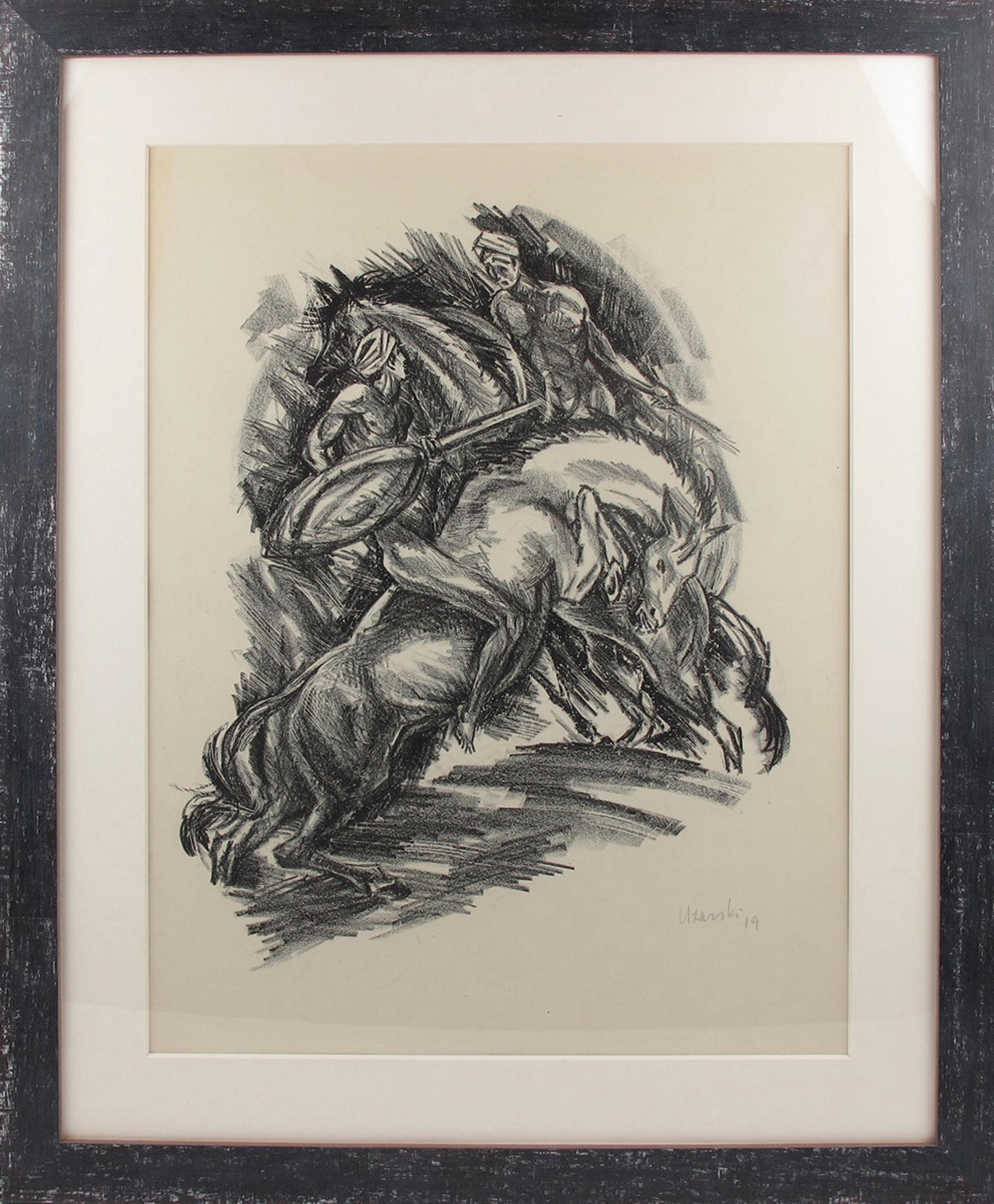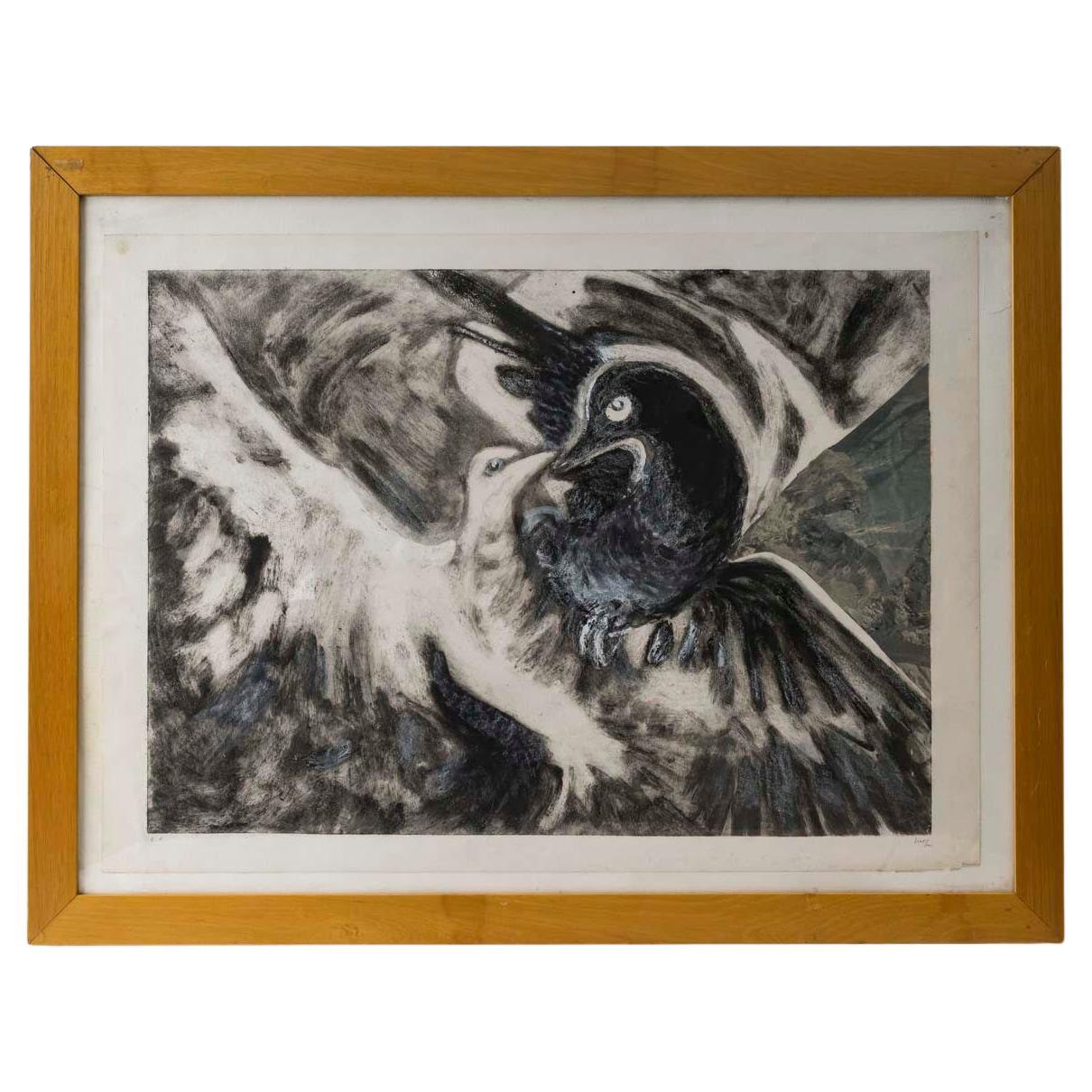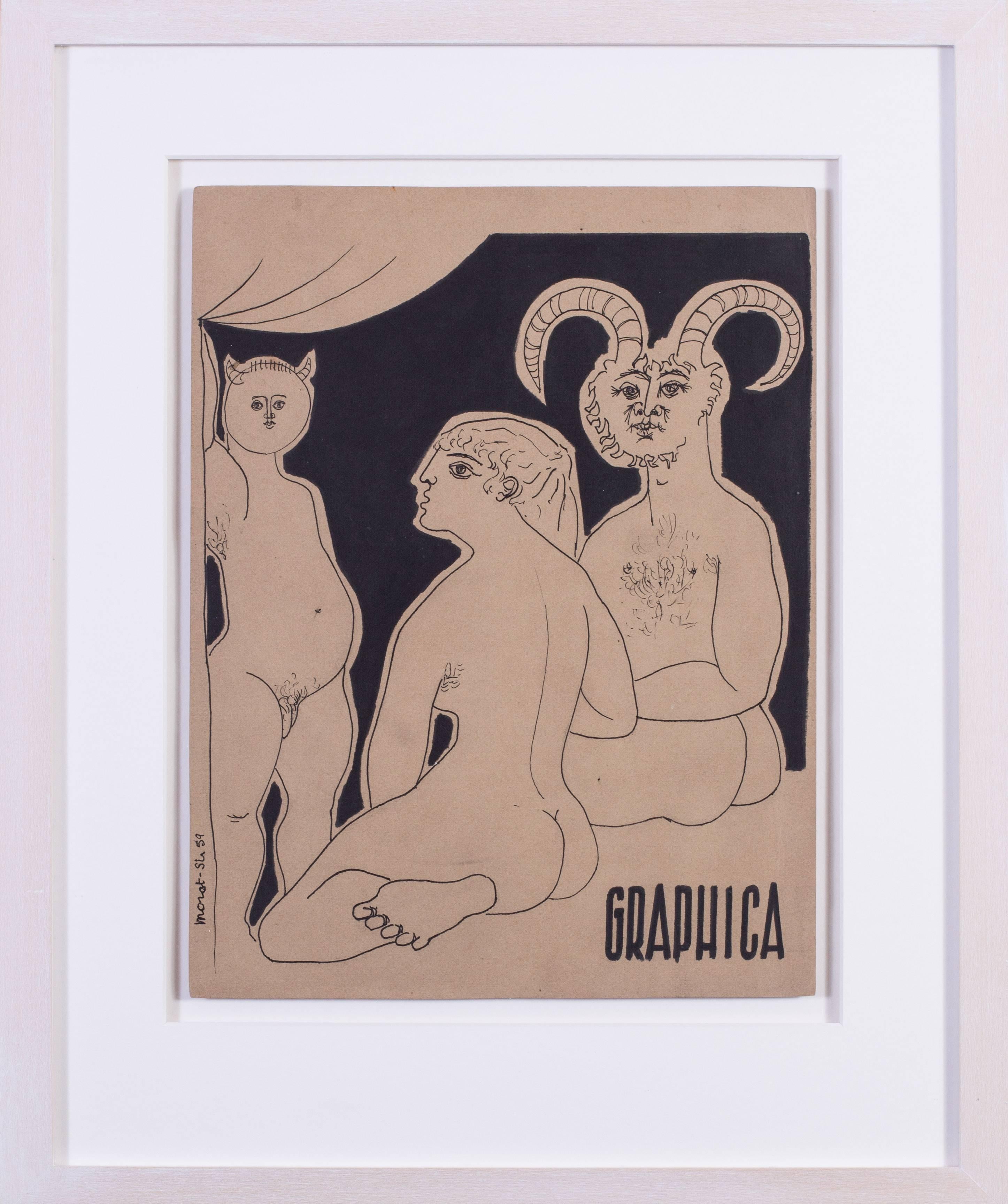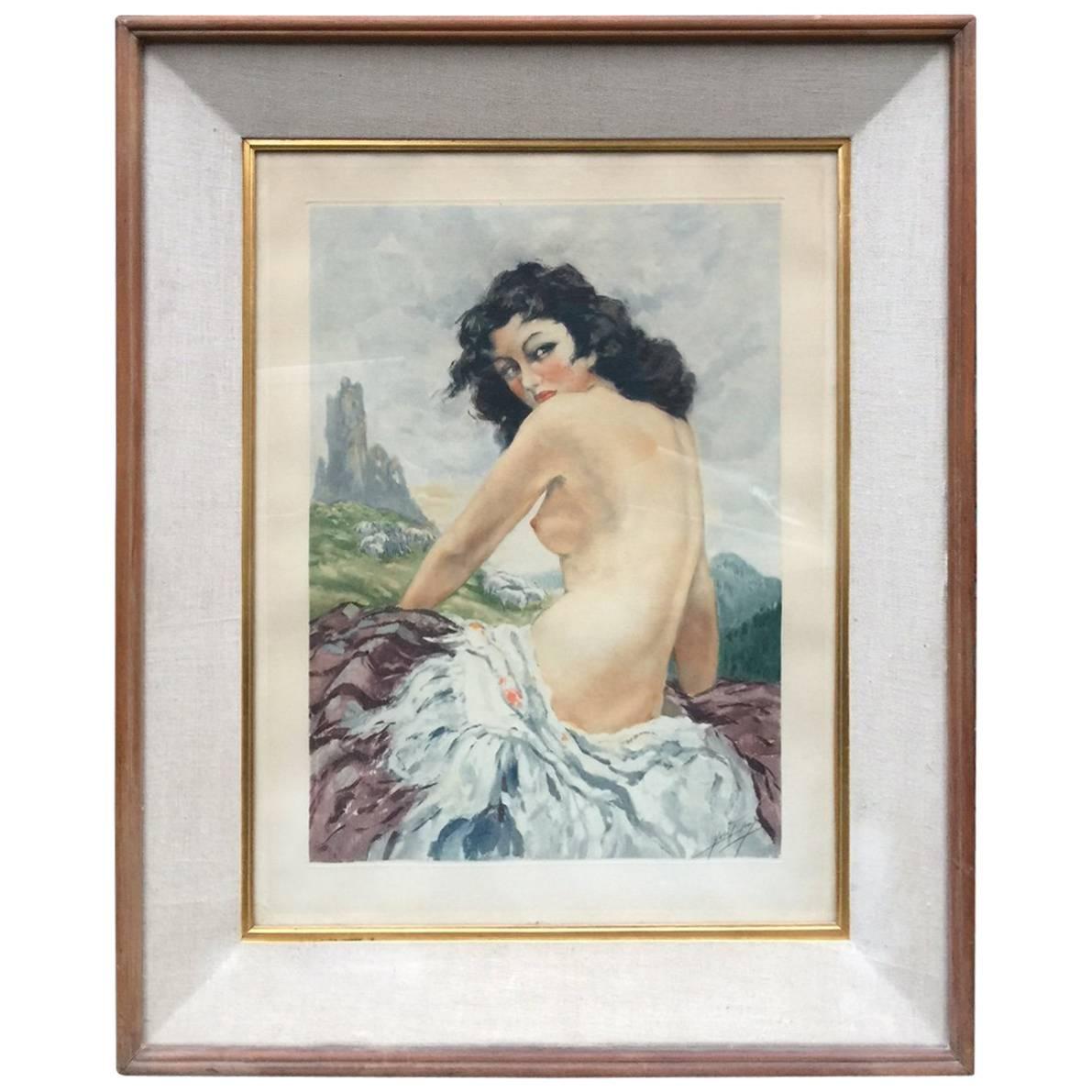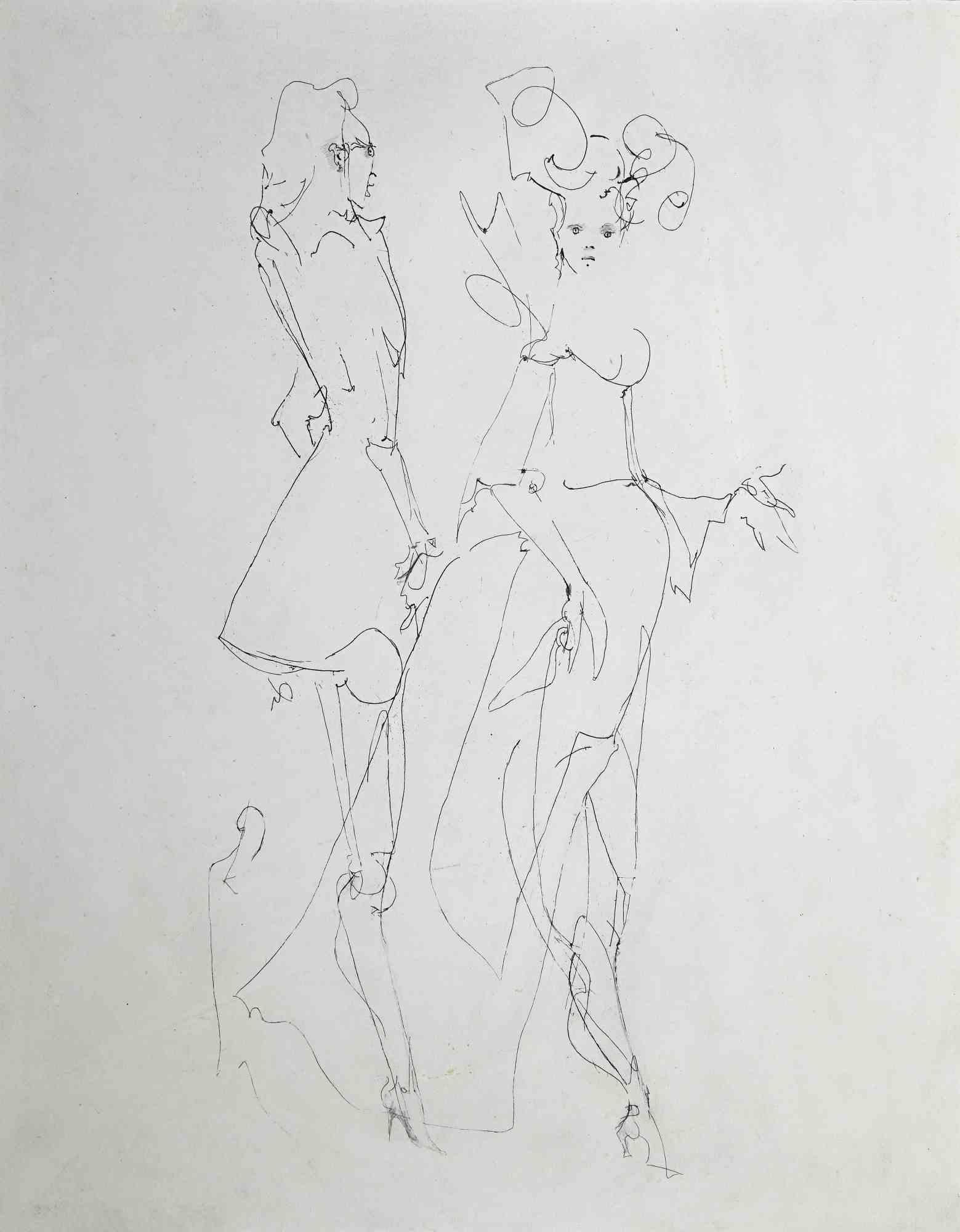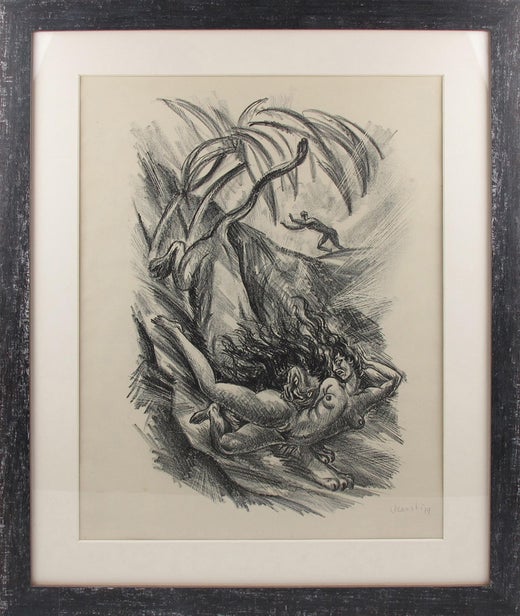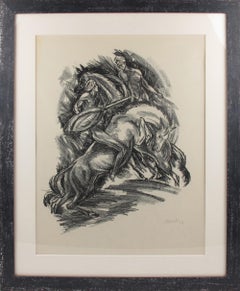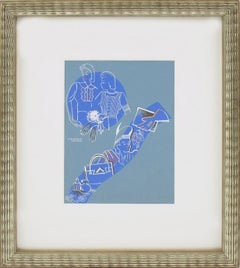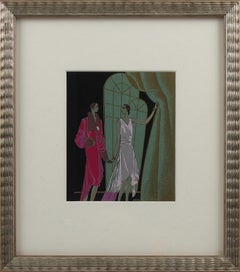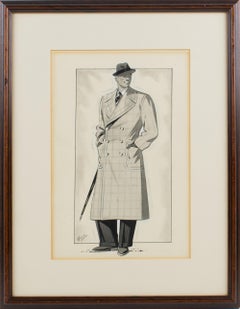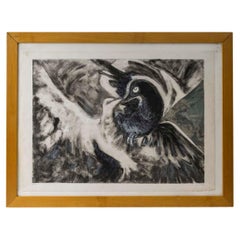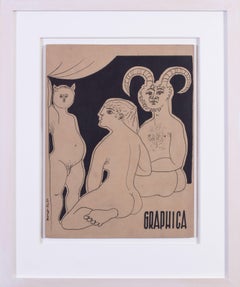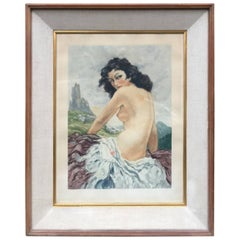Items Similar to Art Deco Fantasy Charcoal Drawing Lithograph Print by Adolf Uzarski
Video Loading
Want more images or videos?
Request additional images or videos from the seller
1 of 18
Adolf UzarskiArt Deco Fantasy Charcoal Drawing Lithograph Print by Adolf Uzarski1919
1919
$2,900
£2,199.07
€2,544.42
CA$4,099.26
A$4,569.88
CHF 2,383.38
MX$55,260.47
NOK 29,960.27
SEK 28,348.41
DKK 18,991.51
About the Item
This stunning charcoal drawing lithograph print on paper depicting a fanciful lion kidnapping a young woman was designed by Adolf Uzarski (1885-1970), a German artist. This drawing is one of five lithographs created to illustrate scenes from the 14th-century Tutinama, a Persian series of 52 stories known as "Tales of the Parrot." The parrot narrates moralistic adventure stories every night for 52 nights, urging its owner to remain faithful to her husband.
The hand-written signature is on the bottom right corner and reads Uzarski - 19.
The painting is adorned with a contemporary frame and an acrylic-glass protection.
Measurements:
With frame: 24.75 in wide (63 cm) by 29.75 in high (75.5 cm).
View: 16.94 in wide (43 cm) by 22.50 in high (57 cm).
Five paintings by that artist are in our inventory. If you would like to do a grouping, kindly ask. Check the ambiance picture with two drawings.
Reference: Adolf Uzarski was a German writer, artist, and illustrator associated with the New Objectivity movement.
He was born in Ruhrort bei Duisburg (1885) and studied at the Cologne School of Architecture before enrolling in 1906 at the Düsseldorf School of Arts and Crafts. He enjoyed success as a commercial artist and held exhibitions in Berlin and Hagen before World War I. While directing the advertising department of the Tietz department store in 1916-1917, he produced the portfolio of lithographs, Totentanz (Danse Macabre - Dance of Death). Beginning in 1919, he exhibited with "Das Junge Rheinland" (Young Rhineland), of which he was a founding member. This stylistically diverse group, which included Arthur Kaufmann and Herbert Eulenberg, was united only by their rejection of academic art.
Active as a visual artist and also as a writer of poetry and fiction, Uzarski illustrated his books and those of others. During the Weimar years, he was one of the artists championed by the Düsseldorf art dealer Johanna Ey until a rift between them in 1923, after which Uzarski left the "Young Rhineland" group to form the "Rheingruppe" (Rhine group), with whom he exhibited from 1925 to 1930.
His art was caricatural in style and sharply satirical of the bourgeoisie society. In 1942, the Nazis condemned the artist as degenerate and forbade him from painting. He went into hiding in Robertville, Belgium. At the end of World War II, Uzarski returned to Düsseldorf and continued his career. He was the subject of a retrospective exhibition at the Berlin Academy of Arts in 1967.
Adolf Uzarski died in Düsseldorf in 1970.
- Creator:Adolf Uzarski (1885 - 1970, German)
- Creation Year:1919
- Dimensions:Height: 29.75 in (75.57 cm)Width: 24.75 in (62.87 cm)Depth: 2 in (5.08 cm)
- Medium:
- Movement & Style:
- Period:
- Condition:
- Gallery Location:Atlanta, GA
- Reference Number:Seller: 6O372CFAHBB1stDibs: LU1212216622112
Adolf Uzarski (1885 - 1970), was a German writer, artist, and illustrator associated with the "New Objectivity Movement". He was born in Ruhrort bei Duisburg (1885) and studied at the Cologne School of Architecture before enrolling in 1906 at the Düsseldorf School of Arts and Crafts. He exhibited in Berlin and Hagen in the years before World War I, and also became a successful commercial artist. While directing the advertising department of the Tietz department store, in 1916–17 he produced the portfolio of lithographs, Totentanz (Danse Macabre - Dance of Death). Beginning in 1919 he exhibited with "Das Junge Rheinland" (Young Rhineland), of which he was a founding member. This stylistically diverse group, which also included Arthur Kaufmann and Herbert Eulenberg, was united only by their rejection of academic art.
Active as a visual artist and also as a writer of poetry and fiction, Uzarski illustrated his own books and those of others. During the Weimar years, he was one of the artists championed by the Düsseldorf art dealer Johanna Ey, until a rift between them in 1923, after which Uzarski left the "Young Rhineland" group to form the "Rheingruppe" (Rhine group), with whom he exhibited from 1925 to 1930.
His art was caricatural in style and sharply satirical of the bourgeoisie society. In 1942, condemned as a degenerate artist by the Nazis, he was forbidden to paint and went into hiding in Robertville, Belgium. At the end of World War II, Uzarski returned to Düsseldorf and continued his career. He was the subject of a retrospective exhibition at the Berlin Academy of Arts in 1967.
Adolf Uzarski died in Düsseldorf in 1970.
About the Seller
5.0
Vetted Professional Seller
Every seller passes strict standards for authenticity and reliability
1stDibs seller since 2019
76 sales on 1stDibs
- ShippingRetrieving quote...Shipping from: Atlanta, GA
- Return Policy
Authenticity Guarantee
In the unlikely event there’s an issue with an item’s authenticity, contact us within 1 year for a full refund. DetailsMoney-Back Guarantee
If your item is not as described, is damaged in transit, or does not arrive, contact us within 7 days for a full refund. Details24-Hour Cancellation
You have a 24-hour grace period in which to reconsider your purchase, with no questions asked.Vetted Professional Sellers
Our world-class sellers must adhere to strict standards for service and quality, maintaining the integrity of our listings.Price-Match Guarantee
If you find that a seller listed the same item for a lower price elsewhere, we’ll match it.Trusted Global Delivery
Our best-in-class carrier network provides specialized shipping options worldwide, including custom delivery.More From This Seller
View AllArt Deco Fantasy Illustration Drawing Painting Lithograph by Adolf Uzarski
Located in Atlanta, GA
German Artist Adolf Uzarski (1885 - 1970) designed this stunning charcoal drawing lithograph print on paper, depicting two riders in a wild dance or fight. This drawing is part of a ...
Category
1910s Art Deco Animal Paintings
Materials
Paper
French Art Deco Original Gouache Illustration Drawing by Raymonde Hacker
Located in Atlanta, GA
A French Art Deco illustrative drawing, hand painted in ink and gouache on blue laid paper. The design includes a collection of fashion accessories, handbags, gloves, hats, and perfu...
Category
1930s Art Deco Figurative Drawings and Watercolors
Materials
Paper, Ink, Gouache
Original French Art Deco Gouache Illustration Drawing by J. Hilly
Located in Atlanta, GA
An original Art Deco illustration hand-painted with ink and gouache on paper. The drawing features two elegant women with large windows and drapery in the background. This image was ...
Category
1930s Art Deco Figurative Drawings and Watercolors
Materials
Paper, Ink, Gouache
Art Deco Fashion Illustration Ink Drawing by G. Ferro
Located in Atlanta, GA
This original Art Deco Fashion Illustration by G. Ferro is a striking ink and wash drawing on vellum paper by French artist G. Ferro. The stunning Art Deco composition captures a dap...
Category
1930s Art Deco Portrait Drawings and Watercolors
Materials
Paper, Ink, Watercolor
The Bathers, Wood-Engraving Drawing Lithograph by John Buckland-Wright
By John Buckland-Wright
Located in Atlanta, GA
John Buckland-Wright, "Baigneuses" – Elegant Lithograph Print
This stunning lithograph print by acclaimed British artist John Buckland-Wright (1897–1954) showcases his remarkable com...
Category
1930s Art Deco Nude Drawings and Watercolors
Materials
Ink, Paper
Nude Female Charcoal Study Drawing by Marie Louise Simard, circa 1930
Located in Atlanta, GA
A study in grace and subtle sensuality, this evocative 1934 black pencil and charcoal drawing by French artist Marie Louise Simard (1886–1963) showcases a nude female figure with scu...
Category
1930s Modern Nude Drawings and Watercolors
Materials
Pencil, Charcoal
You May Also Like
Engraving, Lithography, E.A., by Evelyne Luez, 20th Century.
Located in Saint-Ouen, FR
Engraving, lithography, E.A., by Evelyne Luez, 20th century.
Lithography, engraving, artist's print, E.A., 20th century, by Evelyne Luez.
Framed H: 64 cm, W: 83 cm, D: 1.5 cm...
Category
20th Century French Mid-Century Modern Drawings
Materials
Paper
Original mid 20th Century French drawing by Expressionist Morot-Sir 'Graphica'
By Gerard Morot-Sir
Located in Petworth, West Sussex
Gerard Morot-Sir (French, 1931 – 2003)
Graphica
Ink on paper
Signed and dated ‘ Morot-Sir, 59’ (lower left)
12.1/2 x 9.5/8in. (31.7 x 24.5cm.)
Newly framed in a limed wood frame in a...
Category
Mid-20th Century Expressionist Figurative Drawings and Watercolors
Materials
Paper, Ink
Yves Diey, Art Deco Etching circa 1940, Signed
By Yves Diey
Located in Saint-Ouen, FR
Yves Diey, Art Deco etching after the painting "Jeune Femme" (1935), circa 1940, signed.
Category
Mid-20th Century French Art Deco Prints
Materials
Paper
Mythological Beauty - Original etching, 1943
By Jacques Boullaire
Located in Paris, IDF
Jacques BOULLAIRE
Mythological Beauty
Original etching
Printed signature in the plate
On Arches vellum 30 x 25 cm (c. 12 x 10 inch)
Printed in Haasen workshop in 1943
Excellent con...
Category
1940s Modern Figurative Prints
Materials
Etching
Sketches - Original Drawing - Early 20th Century
Located in Roma, IT
Sketches is an original artwork realized by the Unknown Artist, early 20th century.
Original pen drawing on ivory-colored paper.
Not signed.
This artwork represents two sketches ...
Category
Early 20th Century Modern Figurative Drawings and Watercolors
Materials
Pen
$249 Sale Price
40% Off
Art Deco Etching and Aquatint "Jeunesse" Original Signed by Louis Icart
By Louis Icart
Located in Soquel, CA
Art Deco Etching and Aquatint "Jeunesse" (Youth) Signed by Louis Icart
Iconic figurative of woman and horse titled "Jeunesse" (Youth) by famous Art Deco artist Louis Icart (French, ...
Category
1930s Other Art Style Figurative Prints
Materials
Paper, Pencil, Aquatint
$1,424 Sale Price
54% Off
